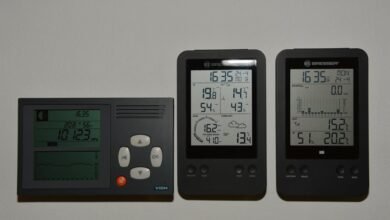Boosting Output with Automated Precision Engineering

Automating for higher output isn’t just about faster results. Across manufacturing, automated precision engineering is reimagining how we design, produce, and scale. Whether you’re leading a factory floor or fine-tuning high-tech consumer products, automated solutions are unlocking new levels of consistency, quality, and speed.
This article explores the impact of automated precision engineering, real-world examples, and what this evolution means for the future of manufacturing. Expect practical insights, industry trends, and strategies to integrate automation into your own workflows.
The Rise of Automated Precision Engineering
Automation in engineering is moving beyond simple robotics. We now see advanced digital technologies, sensors, and machine learning-driven quality control that create smarter, more adaptive production lines. Automated precision engineering combines accuracy, reproducibility, and advanced data analytics to help manufacturers not only do more, but do it better.
Here’s why this matters:
- Traditional methods rely on manual input, which introduces errors and limits scale.
- Automated systems continuously monitor and adjust to minute shifts in variables.
- Data gathered from sensors can inform predictive maintenance, reducing downtime.
Modern facilities are finding they can dramatically boost throughput without sacrificing product quality or reliability. They’re also able to quickly adapt to new designs, new client specs, and batch manufacturing demands.
See also: Robot Pool Cleaner Reviews: What Pool Owners Really Think
How Automated Precision Engineering Works
Integrating Smart Machines
Automation begins on the factory floor with the integration of smart machines. Computer numerical control (CNC) equipment, robots, and material-handling systems are becoming more intelligent every year. These devices can:
- Self-calibrate in real time.
- Use sensors to maintain tighter tolerances.
- Communicate via the Industrial Internet of Things (IIoT).
For example, automated lines now use vision systems to inspect each part, immediately flagging inconsistencies or deviations. Machines can even adjust their settings on the fly, leading to near-perfect output with minimal human intervention.
Software that Powers Performance
Cloud-based software platforms are central to the rise of automated precision engineering. Consider these benefits:
- Remote monitoring lets managers oversee production from anywhere.
- Real-time analytics highlight bottlenecks or quality drift before defects occur.
- Digital twins simulate processes, predicting issues before a part is cut or finished.
By merging digital insights with real-world equipment, manufacturers shorten development cycles and spot improvement opportunities earlier.
Data-Driven Decision Making
Automation generates vast datasets about every aspect of production. Analytics transform this raw information into actionable intelligence such as:
- Predicting tool wear so you replace only when necessary, not on a fixed schedule.
- Identifying inefficiencies in machine programming or toolpaths.
- Forecasting output based on historical trends and current system health.
With this knowledge, teams can implement continuous improvement, deliver projects on tighter timelines, and extend equipment lifespan.
Benefits for Productivity and Quality
Automated precision engineering is primarily about boosting efficiency. But the ripple effects go much further.
Consistency and Repeatability
When machines handle meticulous tasks, results are reliable. Every cut, weld, and fit is the same as the last, meaning:
- Fewer rejects or reworks, saving material costs.
- Easier compliance with stringent industry standards.
Shortened Lead Times
Automation collapses production timelines:
- Rapid setup and changeover between jobs.
- Parallel processes reduce overall manufacturing cycle time.
- Less human supervision required, freeing skilled workers for complex problem-solving.
This means meeting market demand faster and staying ahead of competitors.
Improved Worker Satisfaction
By offloading repetitive or dangerous work to automated systems, manufacturers create safer workplaces. Employees can focus on design, process optimization, or strategic roles, which lead to greater job satisfaction and retention.
Case Studies Across Industries
Aerospace and Defense
Automated precision engineering enables aerospace firms to create lighter, stronger components with incredibly tight tolerances. For example, automated drilling systems in aircraft manufacturing avoid the fatigue errors common to manual drilling, ensuring every hole is in exactly the right place.
Automotive Manufacturing
Automotive plants leverage robots to weld, assemble, and inspect at uniform quality, even as vehicles become more complex. Data analytics identify issues before they cause production halts. This approach helped one major automaker reduce factory downtime by 20% in a single year.
Electronics and Medical Devices
Micro-scale components in electronics or medical devices leave virtually no margin for error. Here, high-speed automated inspection and part handling ensure rapid, flawless assembly at scales impossible for human workers.
Getting Started with Automation
Bringing automated precision engineering online takes planning, but the process pays off. Key steps include:
- Assessing process bottlenecks: Where are errors or slowdowns most common?
- Selecting the right automation tools: What equipment integrates best with your processes?
- Training the team: Upskill workers on automation oversight, programming, and troubleshooting.
- Iterating and optimizing: Use the first wave of data to improve both tooling and workflows.
Start with the most repetitive or high-value areas. Even incremental automation can drive noticeable returns in productivity and quality.
What’s Next for Automated Engineering?
The next wave for precision machining for CNC applications is likely to involve more advanced AI, collaborative robotics (cobots), and real-time adaptive control. Integration with cloud systems will expand, giving team leaders direct access to production dashboards wherever they are.
Manufacturers should watch trends in machine learning, material science, and sensor technology. Investing in these areas today means maintaining a sharp competitive edge tomorrow.
Shaping Your Future with Automated Precision
The age of automated precision engineering is firmly here, and forward-thinking manufacturers are already seeing the impact in higher output, lower costs, and happier teams. By blending smart machines, powerful analytics, and expert oversight, you can create a future-proof production line that outpaces the competition.
The opportunity is real, actionable, and waiting for anyone ready to reimagine what efficient manufacturing looks like. If you’re considering taking the leap, now is the perfect time to explore automated solutions and start small, measure the results, and scale up for even greater success.





